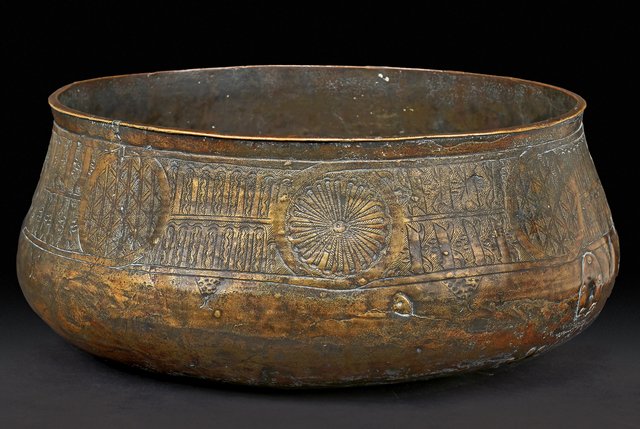Bowl (kuduo)
- Object Name
- Bowl (kuduo)
- Culture / Site
- Asante, Offin River, Ghana
- Medium
- Brass
- Date
- 16th/18th (?) century
- Dimensions
- 15 x 32 cm
- Credit Line
- British Museum, London, Af1955,05.225. Image © The Trustees of the British Museum. Shared under a Creative Commons Attribution-NonCommercial- ShareAlike 4.0 International (CC BY-NC-SA 4.0) license
- Section
- Shifting Away from the Sahara
- Description
This bowl was discovered in 1909 during dredging for gold along the banks of the Offin River in southern Ghana. Its formal similarity to Mamluk brass bowls and basins of the fourteenth and fifteenth centuries that were imported across the Sahara Desert in the late medieval period provides compelling evidence that the making of Akan kuduo was inspired by the north-east African imports. The bowl’s profile and the placement of its surface decoration are almost identical to Mamluk period Arabic-inscribed bowls; however, details such as the use of a pseudo script—an attempt by an artist unfamiliar with Arabic to capture the formal essence of Arabic calligraphy—and the representation of stylized crocodiles and mudfish, inhabitants of the Akan forest, in two of the eight medallions show how a local artist may have reinterpreted important visual elements.
